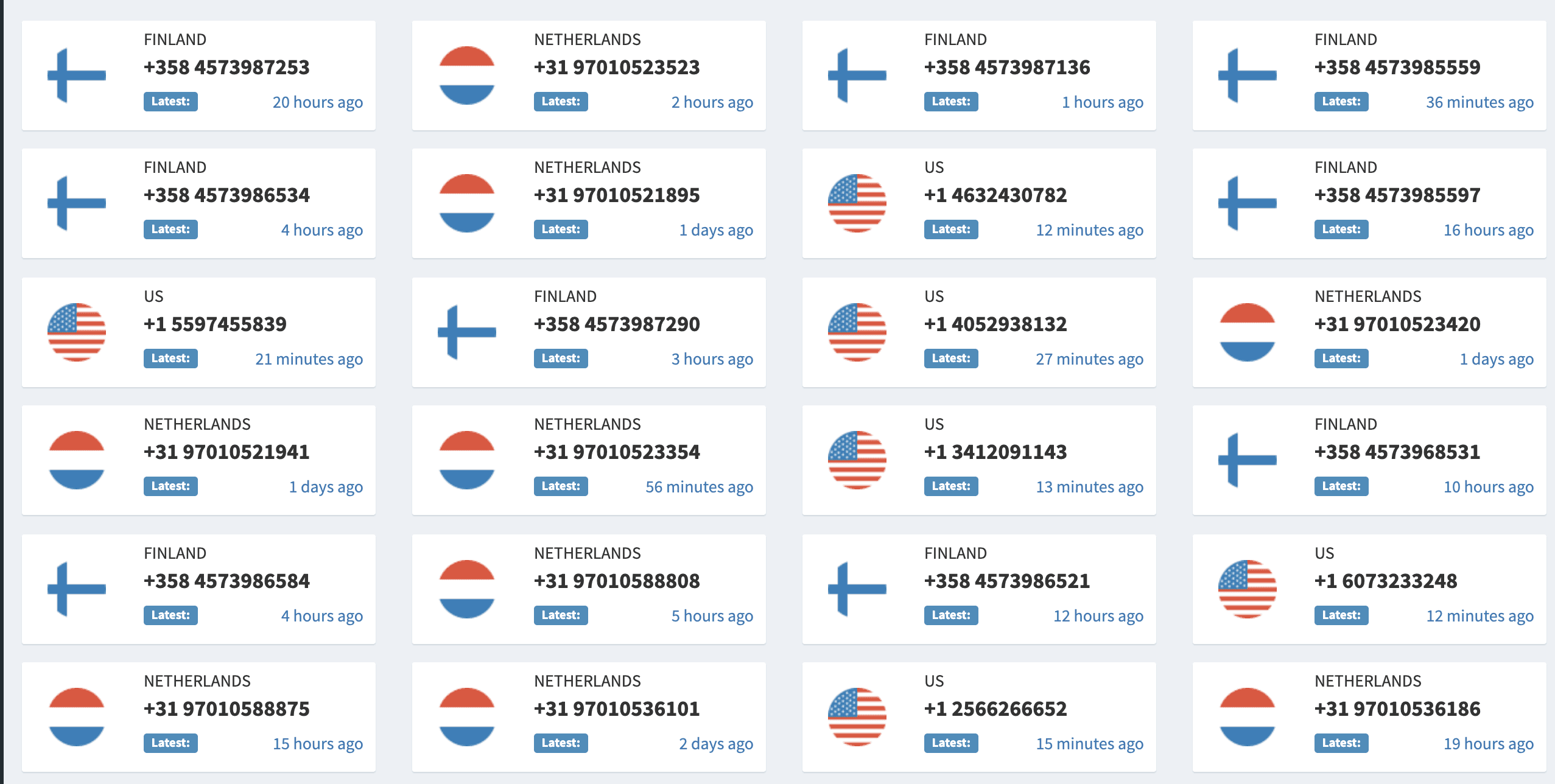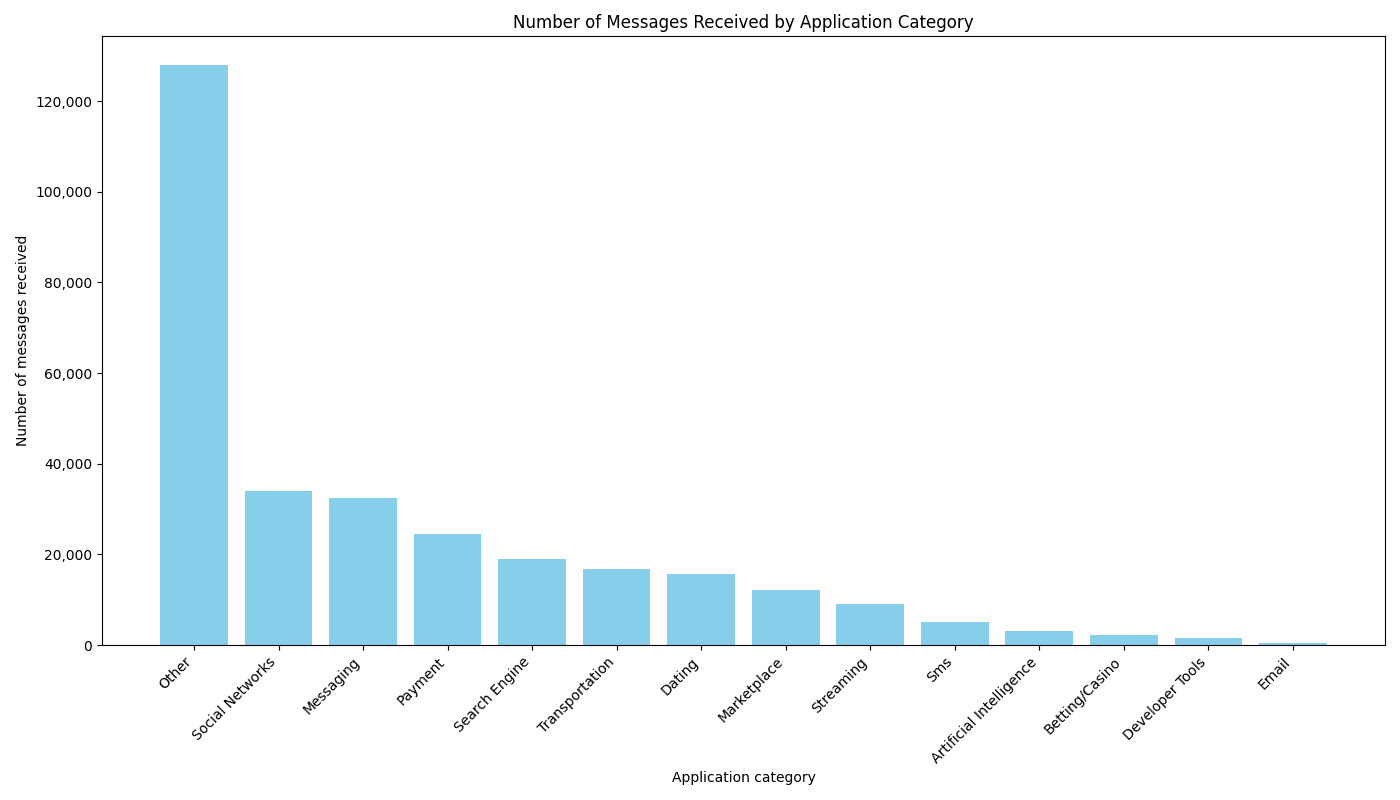Security Tips
May 16, 2025
Disposable telephone numbers can be a sign of fraudulent users. Find out how to detect them and prevent them from accessing your platform.
Phone number verification is a key step in securing user accounts and protecting platforms from fraud. But, with the rise of disposable and temporary phone numbers, businesses are facing new challenges.
These temporary numbers can be generated for free through online services. They are often used to bypass verification processes. This opens the door to issues like fake account creation, fraud, and inflated SMS costs.
How do virtual phone numbers work? And why do they pose a serious threat to businesses? Let's go behind the scenes of disposable phone numbers. How can businesses detect and prevent them?
What are disposable phone numbers?
Disposable phone numbers are also called virtual phone numbers. They are temporary phone numbers generated through apps or services.
These platforms provide users with a phone number for a short period of time or for a specific purpose. For instance: receiving a one-time password SMS to create an online account.
How do temporary phone numbers work?
Temporary phone number generators work by utilizing VoIP technology. VoIP enables them to generate virtual phone numbers. These numbers are not tied to a physical SIM card or specific location.
VoIP (Voice over Internet Protocol) is a technology that allows people to make voice call and text messaging using an internet connection instead of a traditional phone line.
These numbers are sourced from large inventories of numbers maintained by telecom operators or virtual number providers. In those inventories, you can find local and international numbers.
Users can rent these numbers for a set period (from a few minutes to several weeks) based on their specific needs.
Once the rental period expires, the number is recycled and reassigned to another user. Numbers can be deactivated after a single use, like for one-time account verification purposes.
The disposable phone numbers market is large, supported by many web services allowing users to generate virtual phone numbers to send and receive text messages or even make calls.
A Google search of “temporary phone numbers” shows dozens of websites providing this service. As they usually rely on ads for revenue, they are able to provide this service for free or for a low fee.

But now, you’re probably asking yourself: why do people would use them?
Why do people use temporary phone numbers?
People use disposable phone numbers mainly for privacy concerns and to avoid spam. Here are the most common use cases:
Account verification. Users who prefer not to disclose their real phone numbers when creating online accounts turn to temporary phone numbers. These numbers allow them to receive one-time passwords (OTPs) for identity verification during registration processes.
Privacy protection. Users who want to keep their personal number confidential use temporary numbers when interacting with services they do not wish to engage with long-term. It is also used by users who want to build an anonymous profile on social or dating apps.
Developers can also use temporary numbers for testing. When working on mobile applications or messaging system, this helps them to not expose their primary numbers. There are legitimate uses of disposable numbers, however, they are also exploited by fraudsters.
Understanding the disposable phone numbers market
A study from Device and Browser Info analyzed the content of 400,000 messages sent to temporary phone numbers, and found out that:
Temporary phone numbers are mostly used to create a lot of accounts on online platforms by bypassing the SMS verification step.
The most targeted applications are social networks, messaging, payment apps and email providers.

A study from the Madrid Institute for Advanced Studies monitored over 17,000 disposable phone numbers. They ran different analysis to understand how they were used. They found out that this was a rising trend. In 2018, thousands of messages were received by these numbers. In 2023, it was millions of them.
They also found that most online services do not have effective protections against these virtual phone numbers. Global well-recognized services (including Google and Facebook), banks, governments and small brands sent verification messages to disposable phone numbers.
This phenomenon also seems to be worldwide. 31 languages are represented in their dataset with English leading the way, followed by Indonesian, French, Portuguese, Spanish, Arabic, Chinese and Russian.
This raises questions about the quality of users who sign up with disposable phone numbers. Do they represent a threat to targeted applications?
Why your company doesn’t want users with temporary phone numbers
Citing the Device and Browser Info study again: AI applications, like ChatGPT and Claude, were heavily affected by disposable phone numbers. These users were creating many free accounts to avoid paying for the premium version of the products.
Free trial abuse is just one of the many ways fake accounts can harm your business and impact revenue.
Fraudsters may use temporary numbers to start fraudulent calls. They can generate revenue by exploiting international termination rates. Attackers also use temporary numbers to flood a system with automated sign-ups and bogus SMS traffic. This drives up costs for businesses relying on SMS for verification as part of an SMS pumping or SMS toll fraud.
Once fake users have created accounts, they can disrupt your service in several ways, including:
Posting fake product reviews if you run an e-commerce or marketplace platform.
Enabling money laundering if you operate in the banking or finance sector.
Scamming legitimate users on a social network, messaging app, or dating service.
Cheating if your app is in the gaming industry.
These can damage your company's reputation, the confidence of your customers and your financial results.
And one of the tell-tale signs that your users are fake and malicious is that they use a disposable phone number.
How to detect and prevent temporary phone numbers?
There are two ways you can detect virtual phone numbers to reduce your number of fake users.
1. Maintaining a database of every known temporary phone numbers
With web scrapers and API integrations, you can collect information about temporary numbers from virtual number generators public inventories. You can add all these numbers to an internal database. With scheduled routine updates to this database, you can incorporate new numbers and remove outdated ones.
When a user inputs their phone number, you’ll be able to cross-reference it in real time with your database. You'll be able to determine if it’s associated with a known disposable phone number.
Yet, you need to keep in mind that this technique raises some challenges:
Keeping the database updated with the latest information is a significant logistical challenge. Done badly, this could end up blocking legitimate users as fraudulent.
Listing all the providers is tricky, as smaller or less-known providers may not be included.
Regularly updating and maintaining the database can be resource-intensive. It requires dedicated staff, technology investments, and ongoing monitoring. Same goes for the implementation of the database within your existing systems.
This is why we recommend using this second method.
2. Using a phone number validation service
As you’ve seen, listing every known temporary phone numbers is a full-time job. The good news is that specialized services have taken on this responsibility. Making the process much simpler.
Phone number validation services focus on building exhaustive databases of disposable numbers. Their APIs seamlessly integrate the verification process into your website or application.
Prelude is one of those services that can help you filter users of disposable phone numbers. We maintain the most comprehensive database of temporary and virtual numbers. We achieve this by sourcing from multiple channels:
Monitoring public virtual phone number listings across providers.
Subscribing to commercial databases of virtual numbers.
Leveraging historical data. Some virtual numbers are no longer publicly listed but are still used.
This listing is updated in real-time, 24/7. Our customers have access to the most up-to-date phone number verification service.
Businesses can then use this data in two different ways:
Verify specific numbers with our Look-up API. Submit a list of phone numbers you want to validate. Our API will assess their risk score and flag those that are disposable or virtual numbers.
Validate every new users in real-time. Our SMS Verification API integrates directly with your systems. It helps verifying phone numbers during registration, login, or any sensitive actions. By incorporating our database of disposable numbers, we help prevent fraud. This ensures that your OTP messages reach legitimate users, optimizing your verification budget.
Case study: Helping BeReal reduce their fake traffic by 95%
Social app with over 50 million global users BeReal faced significant fraud attacks. This inflated their SMS costs and message volumes. Blocking entire countries to curb these attacks conflicted with their growth objectives and core values.
When Google Firebase changed its pricing structure, the per-user pricing became unsustainable for BeReal. With their large user base and frequent fraudulent activity, they had to find another provider.
By switching to Prelude, BeReal made a dramatic impact on fraud prevention. They reduced fake SMS traffic from 40% to just 2%. Our anti-fraud API filtered out disposable phone numbers and fraudsters attempting international revenue share fraud attacks.
Now, BeReal only sends OTPs to genuine users. This lowers their operational costs while boosting their conversion rate.
Verifying if a phone number is disposable is a great way to start mitigating fake users, malicious accounts and spammers. Detecting those numbers before sending them an OTP code also helps your company save a big chunk of your user verification budget.
Leveraging a dedicated phone number verification tool is the most effective way to do so. To help with this, feel free to try out our SMS API and install it on your platform to start verifying your users. You can also contact our sales team who can guide you through this process.
Recent Articles



